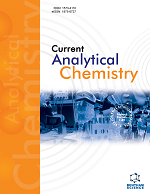
Full text loading...

Brexpiprazole (BXP) is a novel dopamine and serotonin partial agonist used for the treatment of schizophrenia. It has recently gained approval for the treatment of agitation associated with dementia due to Alzheimer’s disease. This study aimed to enhance the fluorescence intensity of BXP by turning “OFF” its photoinduced electron transfer and employing the enhanced fluorescence in establishing two analytical platforms for the direct quantification of BXP in commercial pharmaceutical tablets and plasma.
Two analytical methods were developed: a microwell spectrofluorimetric assay combined with a fluorescence microplate reader (MW-SFA) and flow injection analysis coupled with a fluorescence detector (FIA-FD). Both platforms underwent optimization and validation.
The linear ranges of the platforms were 5–500 for MW-SFA and 20–2000 ng/mL for FIA-FD. The limits of quantification were 12.9 and 25.5 ng/mL for MW-SFA and FIA-FD, respectively. Both platforms showed high precision and accuracy, with relative standard deviation (RSD) values ranging from 1.2% to 1.9% and recovery values ranging from of 98.5% to 102.4%. The proposed platforms were successfully applied to the analysis of BXP in tablets, and the recovery values ranged from 99.2% to 101.4% with RSD values ranged from 1.1% to 1.8%. The suggested platforms were also employed for analyzing plasma samples containing BXP, achieving an accuracy of at least 98.6%. The greenness levels of both platforms were confirmed using three metric tools.
The enhancement of native fluorescence of BXP resulted in high sensitivity of both MW-SFA and FIA-FD platforms. The employment of microwell and flow injection approaches enhanced the accuracy and precision of both platforms. Additionally, both platforms offered a high-throughput, cost-effective, and green analytical approach.
The proposed platforms feature simple procedures, high sensitivity, high throughput, and environmental greenness. The platforms are highly recommended as effective tools for BXP determination in pharmaceutical quality control and clinical laboratories.